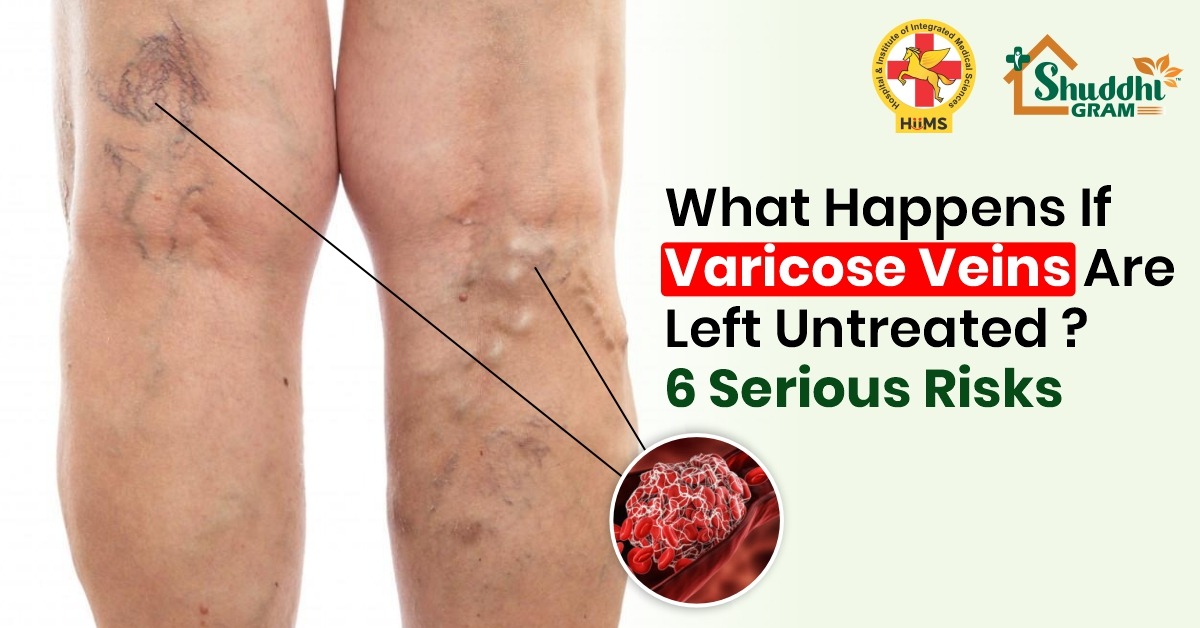
Many people see varicose veins as just a aesthetic concern, yet ignoring them can result in serious health issues. These are twisted and swollen veins usually found in legs and ankles, particularly in people who are on their feet for long periods of time, such as security guards, drivers, teachers, and manual labourers. Although they may begin as a minor problem, the varicose veins problems can develop into pain, swelling, and even serious issues in the long run. It is essential to know the long-term effects of varicose veins. Modern and Ayurvedic treatments should also be applied in the early phases of the disease, which will help to reduce the discomfort and improve proper circulation to avoid serious health issues.
What Are Varicose Veins? Symptoms and Causes
In Ayurveda, varicose veins are referred to as Siraja Granthi. These veins become enlarged and tortuous and lose elasticity, particularly in the lower legs and ankles. Veins that pool blood inefficiently and cannot return blood to the heart cause pain and swelling.
Symptoms of varicose veins include:
- Legs that are heavy, aching, or throbbing
- visible vein bulges, frequently purple or blue
- Tingling or numbness in the legs
- The ankles and feet swell.
- Skin discolouration or ulcers in extreme situations
Varicose vein causes are connected to both contemporary and Ayurvedic viewpoints:
- Weak vein walls and broken valves cause blood pooling.
- Long-term sitting or standing that impairs circulation
- Age, hormonal shifts, and genetic susceptibility
- In Ayurveda, vitiation of Vata and Pitta doshas is aggravated by improper diet, excess strain, and a sedentary lifestyle.
6 Serious Risks of Untreated Varicose Veins
Varicose veins can worsen into major health problems if ignored. These are the six main issues:
1. Constant Pains and Swelling of Legs.
Constant pain, heaviness, and cramping are the most common varicose veins problems. Blood pooling creates pressure, which makes the veins swell and hurt, particularly when standing or doing stressful tasks. Daily activities may become challenging as mobility deteriorates over time.
2. Skin Problems and Dermatitis
Poor circulation can lead to varicose veins health risks, such as dry, itchy, and inflamed skin. Conditions may progress to:
- Venous dermatitis: Red, itchy, inflamed skin.
- Lipodermatosclerosis: Hardening and scarring of the skin with discolouration.
3. Venous Ulcers
Varicose veins in their untreated form can be a source of venous ulcers, painful sores developing near the ankles. Chronic inflammation and high vein pressure are the causes of these ulcers. Their recovery is slow and prone to infection, requiring immediate attention.
4. Blood Clot Risks
The risk of a clot forming is increased when blood pools in veins.
- Painful clots in veins closer to the surface are known as superficial thrombophlebitis.
- Deep vein thrombosis (DVT): Injuries in deeper veins that have the potential to spread to the lungs and cause pulmonary embolism (PE).
5. Bleeding
Varicose veins close to the skin’s surface may rupture, causing unexpected bleeding. This is a rare case, but it requires immediate medical attention.
6. Reduced Quality of Life
Long-term discomfort, edema, skin alterations, and the risk of ulcers can significantly impact lifestyle and mobility. Left untreated, Varicose veins can impair general health and make standing, walking, or exercising challenging.

Ayurvedic Treatment Options for Varicose Veins
Natural solutions to treat varicose vein problems, lessen their symptoms, and halt their progression are offered by Ayurveda:
1. Sira Bandhana (Vein Support and Compression)
Ayurvedic compression wraps or crepe bandages can support veins, lessen swelling, and ease heaviness in the legs.
2. Leech Therapy (Jalaukavacharana)
Therapeutic leech application near affected veins removes stagnant blood, reduces inflammation, and relieves pain.
3. Basti (Medicated Enema Therapy)
An enema of herbal decoctions will improve circulation based on roots, strengthen veins, and balance Vata dosha.
4. Herbal Remedies
- Eranda (Castor root): Minimises pain and inflammation.
- Mandookaparni (Gotu Kola): Helps to improve the elasticity and circulation of the veins.
- Manjishta and Sariva: Purify the blood and calm the unstable Pitta.
- Punarnava and Guduchi (Giloy): Reduce swelling and improve tissue health.
5. Ayurvedic Oral Medicines
- Kaishora Guggulu: Cleanses the blood and promotes the health of veins and joints.
- Chirabilvadi Kashaya and Sarivadyasava: Reduce inflammation and improve circulation.
6. Lifestyle Recommendations
- To improve venous return, raise your legs while you’re at rest.
- Do not stand or sit too long; get some rest and move.
- Moderate physical activities like walking or yoga can help build leg muscles.
7. Home Remedies
- Put an herbal paste of vacha, turmeric, and tulsi mixed with aloe vera on the veins to alleviate pain.
- To improve the circulation, take the juice of Karanja and castor with honey on an empty stomach.
When to Get Medical Help
You have to contact a medical consultant in case of noticing:
- Constant swelling of the legs or ankles.
- Blackened, swollen, or red skin.
- Slow-healing, painful sores or ulcers.
- Acute redness, heat, or leg weakness (DVT) may occur.
Most of the long-term effects of varicose veins can be prevented by early intervention, improving the quality of life.
Conclusion
Although varicose veins may be considered a cosmetic problem, their neglected condition may cause severe health problems such as chronic pain, swelling, venous ulcers, skin alterations, and blood clots. The long-term effects of varicose veins can be eliminated, circulation can be improved, and the body can remain healthy by identifying the varicose veins problems and taking early action based on lifestyle choices, Ayurvedic remedies, and medical interventions. Early intervention ensures increased comfort, mobility, and quality of life.

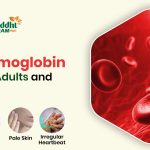

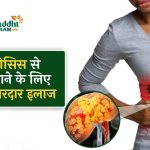
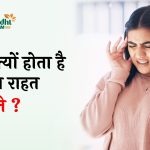
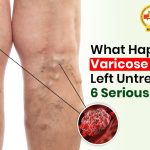
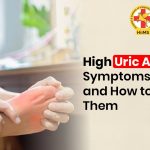
No approved comments yet.